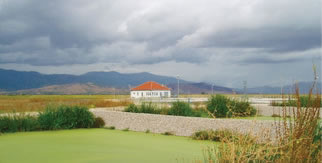
Environmental Science and Engineering
Hydrologic Bioretention Performance and Design Criteria for Cold Climates
Publication Date: December 2008
Cooperating Institution: Dakota Soil and Water Conservation District
Sub-Grantee: James Riggs
Project Budget: $215,980
Project Identifier: 04-DEC-13SG
DESCRIPTION
One of the primary tools used in the decentralized approach to urban stormwater management is routing runoff to bioretention systems (rain gardens) integrated into the urban landscape. Most bioretention design information focuses on warm climate conditions with rainfall as the source of the runoff. This may be due to an assumption that bioretention systems become dormant and have little infiltration performance in the winter. Field observations suggest these systems can continue to infiltrate to varying degrees during the winter if designed, installed and maintained properly; however very little research is currently available to quantify the extent of their performance when using snowmelt as the runoff source under field conditions.
This Water Environment Research Foundation (WERF) hydrologic research project was a three-year (2005-2008) study that collected air temperature, soil temperature, and soil moisture data at four existing bioretention cells located in the Minnesota Twin Cities metropolitan area and conducted simulated snowmelt events to observe their hydrological performance responses under winter conditions. The measured responses reveal a dramatic range of performance including rapid infiltration during varying cold climate conditions.
The study used the scientifically based data to develop practical design, installation, and maintenance recommendations that optimize hydrologic performance of bioretention cells in cold climates. A companion report, Recommendations to Optimize Hydrologic Bioretention Performance for Cold Climates, summarizes the conclusions, practical recommendations, and technical guidance in the final report to facilitate use and application by stormwater professionals who design, construct and maintain bioretention systems operating under cold climate conditions.

